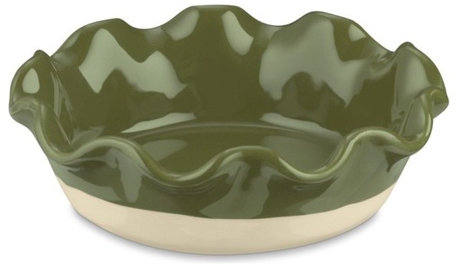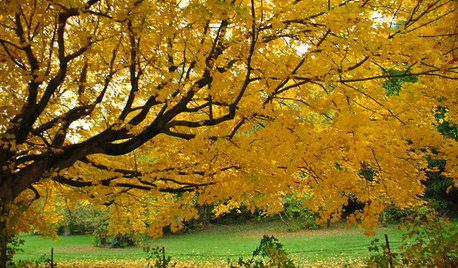Corn Gluten in the Fall?
raymondo17
16 years ago
Related Stories

SUMMER FRUITS AND VEGETABLESHow to Grow Your Own Fresh, Sweet Corn
Here's how to plant and care for your own mini cornfield
Full Story
GARDENING GUIDES8 Plants for a Deliciously Fragrant Fall Garden
Scent the autumn air with the perfume of caramel corn, honey and spices by adding these intoxicating plants to your landscape
Full Story
GARDENING GUIDESGarden Myths to Debunk as You Dig This Fall and Rest Over Winter
Termites hate wood mulch, don’t amend soil for trees, avoid gravel in planters — and more nuggets of garden wisdom
Full Story
PORCHESA Peek at 2 Prettily Dressed Fall Porches
Pumpkins, fall flowers and flea market finds help two Ohio porches get into the seasonal spirit
Full Story
PRODUCT PICKSGuest Picks: Baking and Decorating Goodies for Fall Treats
Cutters, pans, sprinkles and other kitchen supplies to make your fall baked goods look as yummy as they taste
Full Story
FALL AND THANKSGIVINGIt's Black and White and Fall All Over in a Holiday-Happy Home
Get inspired for budget-friendly fall decorating by a resourceful stylist's thrifty but sophisticated adornments
Full Story
MOST POPULARBrilliant Scenes of Fall Color Indoors and Out
Celebrate the season with Houzzers’ photos of fall
Full Story
FALL AND THANKSGIVINGSimple Pleasures: Celebrate Fall With These Special Traditions
Enjoy a meaningful autumn with seasonal ideas for decorating, cooking and entertaining
Full Story
FALL AND THANKSGIVINGIt's Not Too Late to Decorate: Minimalist Fall Decor
No need to go all-out with autumn decorations. Nod to the season with just a few well-placed pumpkins and flowers
Full Story
FALL GARDENING7 Reasons Not to Clean Up Your Fall Garden
Before you pluck and rake, consider wildlife, the health of your plants and your own right to relax
Full Story





rutgers1
bpgreen
Related Professionals
Bellflower Landscape Architects & Landscape Designers · Roosevelt Landscape Architects & Landscape Designers · Belvedere Park Landscape Contractors · Burien Landscape Contractors · Cockeysville Landscape Contractors · Monterey Landscape Contractors · North Haven Landscape Contractors · Santa Maria Landscape Contractors · View Park-Windsor Hills Landscape Contractors · Weymouth Landscape Contractors · East Norriton Landscape Contractors · Huntsville Swimming Pool Builders · Lake Forest Fence Contractors · Maywood Fence Contractors · Palmetto Fence Contractorsrutgers1
bpgreen
lou_spicewood_tx
texasredhead
lou_spicewood_tx
sqinaz
Kimmsr
whip1 Zone 5 NE Ohio
dagger666
raymondo17Original Author
ljbrandt
Kimmsr
ljbrandt
Kimmsr
freyja5
ljbrandt
freyja5
ljbrandt
dchall_san_antonio